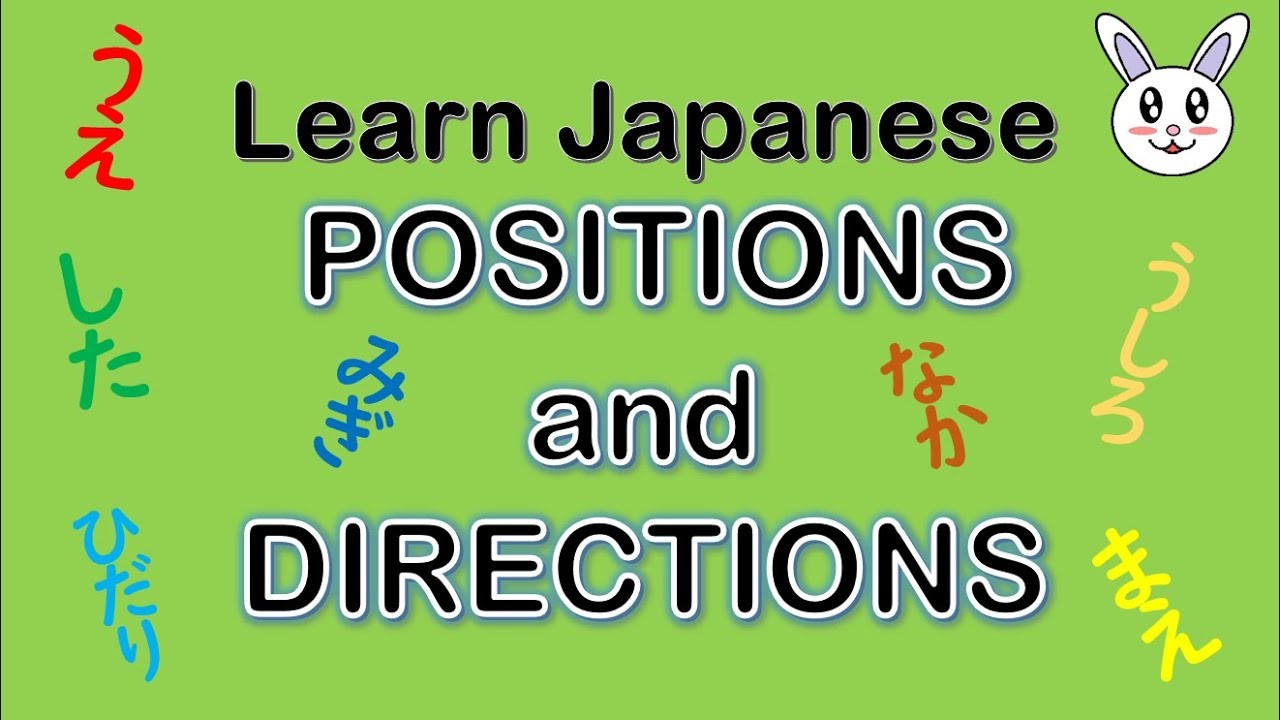- 1. Basic Directions in Japanese
- 2. Asking for Directions in Japanese
- 3. Essential Direction Vocabulary in Japanese
- 4. Japanese for Travel: Navigating with Confidence
- 5. Practice Your Listening Skills with Direction Scenarios
- 6. Additional Resources
Navigating a new city in a foreign language can be tough, but asking for directions in Japanese is easier than you think! This guide covers key phrases, vocabulary, and practice tips.
1. Basic Directions in Japanese
Let's start with the fundamentals. Here are some common Japanese words for directions:
Forward (mae): 前
Backward (ushiro): 後ろ
Left (hidari): 左
Right (migi): 右
Up (ue): 上
Down (shita): 下
You can use these words to create simple directions:
Straight ahead (massugu): まっすぐ
Turn left (hidari e magatte): 左に曲がって
Turn right (migi e magatte): 右に曲がって
Learning basic directional words is fundamental to asking for and understanding directions in Japanese. This section will cover words like mae (前 - front), ushiro (後ろ - back), migi (右 - right), and hidari (左 - left). Mastering these is your first step to navigating Japan with ease. However, simply knowing these words might not be enough to achieve fluency. There are many resources that can help you with the best way to learn to speak Japanese.
2. Asking for Directions in Japanese
Knowing how to ask for directions is key to getting around. Here are some common phrases:
How do I get to...? (~へはどうやって行きますか?): ~へはどうやって行きますか?
Where is...? (~はどこですか?): ~はどこですか?
Excuse me, could you tell me the way to...? (すみません、~への道を教えてください): すみません、~への道を教えてください
This way, please (kochira e douzo): こちらへどうぞ
Turn left (hidari e magatte kudasai): 左に曲がってください
Turn right (migi e magatte kudasai): 右に曲がってください
This section will teach you polite phrases for asking for directions. We'll cover phrases like "Sumimasen..." (すみません… - Excuse me...), " ...e ikimasu ka?" (...へ行きますか? - How do I go to...? ), and useful sentence structures for getting the information you need. Expanding your vocabulary is crucial, and this article on best way to learn Japanese vocabulary provides many strategies.
3. Essential Direction Vocabulary in Japanese
Expand your vocabulary with these key words:
Cardinal directions:
North (kita): 北
South (minami): 南
East (higashi): 東
West (nishi): 西
Other directions:
Up (ue): 上
Down (shita): 下
Straight (massugu): まっすぐ
Across (mukou): 向こう
Near (chikai): 近い
Far (tooi): 遠い
Northeast (hokuto): 北東
Northwest (seito): 西北
Southeast (tonan): 東南
Southwest (seinan): 西南
Directional verbs:
Go (iku): 行く
Come (kuru): 来る
Turn (magaru): 曲がる
Pass (tooru): 通る
This section will delve deeper into more nuanced vocabulary related to directions, such as street names, landmarks, and public transportation terms. Understanding these words is crucial for comprehending more complex directions. To put your new vocabulary into action, why not check out this resource on Japanese conversation practice?
4. Japanese for Travel: Navigating with Confidence
When traveling, it's helpful to know basic phrases for asking for directions:
Where is the bus stop? (basu tei wa doko desu ka?): バス停はどこですか?
Where is the train station? (eki wa doko desu ka?): 駅はどこですか?
How far is it to the hotel? (hoteru made wa ikura desu ka?): ホテルまではいくらですか?
How long does it take to get there? (ikura kakarimasu ka?): いくらかりますか?
Read More:
Hello in Japanese and other common phrases you should know
10 Reasons why Japanese is hard to learn
How Many Hiragana Characters Are There?
5. Practice Your Listening Skills with Direction Scenarios
To improve your listening comprehension, try listening to short dialogues or audio clips that involve giving directions. Focus on the terminology utilized to outline directions. These materials can be located on the internet or within Japanese language learning applications.
6. Additional Resources
Japanese language learning apps: Many apps offer dedicated lessons on directions and navigating.
Websites: Websites like Tofugu and Tae Kim's guide to Japanese grammar offer comprehensive explanations of directions and related vocabulary.
Books: Japanese language textbooks often include sections on directions and asking for help.
Remember: Practice makes perfect! The more you utilize these expressions, the more assured you'll feel while traveling in Japan. So go out, discover, and relish the experience!
In this article, I have guided you through Japanese phrases for giving directions. Practice them fluently to confidently communicate when you set foot in the Land of Cherry Blossoms!








